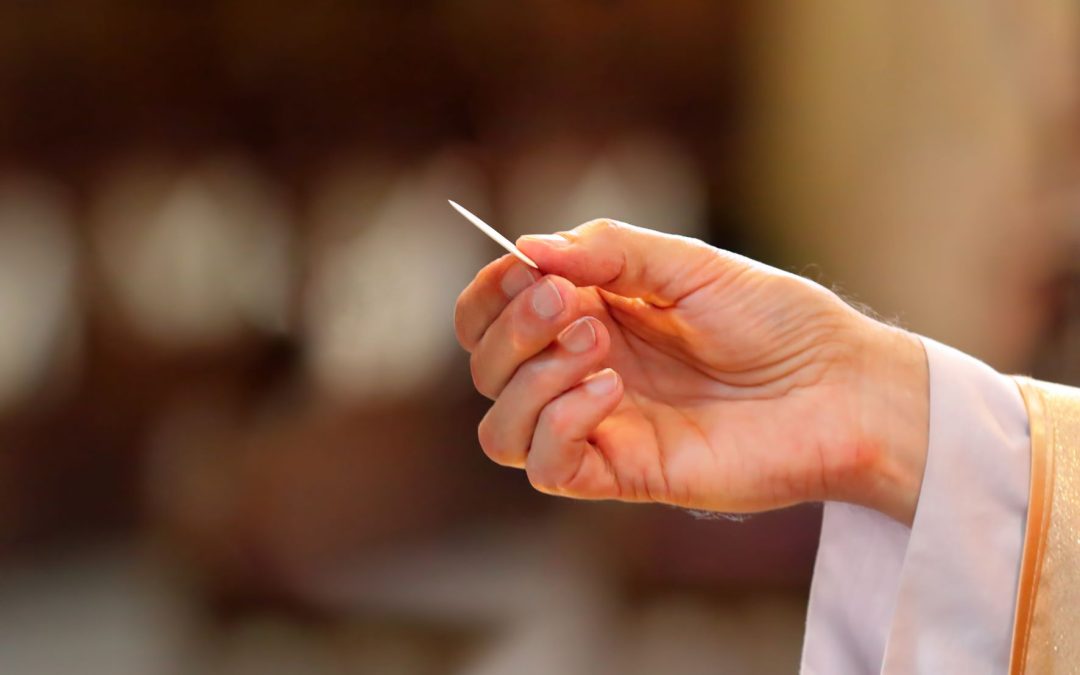At the Last Supper Our Lord instituted the Eucharist and the priesthood so that we would have the incredible privilege of receiving his Sacred Body and Blood as food for the journey to heaven. What a tremendous gift!
Therefore, before we even consider approaching the sacred altar for Holy Communion, we should remind ourselves not so much of what we are receiving, but whom we are receiving. Holy Communion is all about relationship — our personal relationship with Jesus Christ, but also our varied relationships with others. In fact, the Latin word communio is a combination of the words “union” and “with”. Holy Communion is more than just about “me and Jesus,” but also an expression of “we and Jesus.”
To receive Holy Communion well, we ought to examine our heart regarding our relationship with Christ and our attitude toward our brothers and sisters. The Church offers many different examinations of conscience so that we can determine whether we are disposed to receive the Lord in Holy Communion.
We might ask ourselves the following questions: Have I been a “friend” to Jesus (Jn 15:14)? Am I guilty of grave, personal sin (Mt 15:18-19)? Have I seen Jesus in my least brothers and sisters (Mt 25:40)? Have I tried to love my enemies and those I find difficult to get along with (Lk 6:27)? Do I need to go to confession before I am ready to receive the Lord? Therefore whoever eats the bread or drinks the cup of the Lord unworthily will have to answer for the body and blood of the Lord (1 Cor 11:27).
If we have discerned that we are properly disposed to receive Holy Communion, then we approach the Lord with love and humility, “Lord, I am not worthy.” The Church permits three different ways to receive Holy Communion (GIRM 160-162), and it is our discretion how we decide to receive.
One way, the communicant (person receiving Communion) joins the line, and before receiving, bows profoundly from the waist, and receives the Sacred Host on the tongue.
A second way of receiving is to make a profound bow and receive on the hand. This is done by making a throne, that is, one hand beneath the other, with the palm flat. Once the Host is placed on the hand, the person steps to the side and consumes the Host immediately. One should observe to make sure no particles of the Host are dropped, but that everything is consumed.
The third way of receiving Holy Communion is to do so kneeling, either on a kneeler or on the floor. If one receives kneeling, one always receives on the tongue. Anytime a person receives Communion on the tongue, they should extend their tongue sufficiently so that the priest (or minister distributing Communion) avoids touching any part of the person’s mouth or tongue.
One aspect many communicants forget is the act of thanksgiving that should take place immediately after receiving Holy Communion. This is our most intimate time with Our Lord. We should not only express our thanks but also ask for the graces we need. He is closest to us at this moment than any other time. He has entered under the roof of our mouth and our soul. We make a welcome place for him conveying our thanks, desires, and acts of love. It is also recommended that we take a few minutes after Mass has ended to pray and consecrate the rest of our day (or week) for his glory.
Have a question you’d like a priest to answer? Submit your questions here and we can have a priest answer them in a future article.


